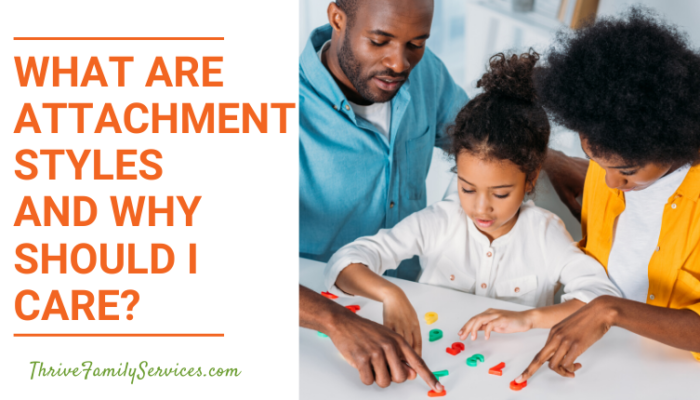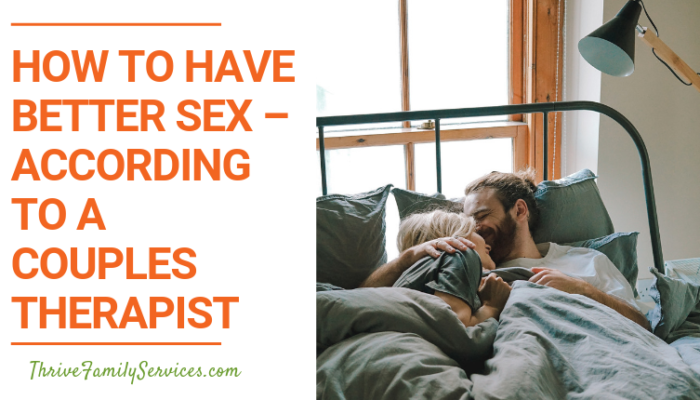Thanks to the contributions of Sigmund Freud and John Bowlby to the field of psychology, most people have some level of awareness that childhood experiences play a part in the way you interact in adult relationships. However, the impact of these childhood experiences might be different than you would think. Your attachment style is a great example of this.
Attachment theory is a research-supported concept that has led to a new way of thinking. It is now used to define how childhood experiences impact adult relationships. “Attachment” could be defined as a deep emotional bond that connects one person to another. For example, most infants develop an attachment to their parent when they are born. However, it is important to note that attachment in humans does not develop solely on physical needs. It is, in fact, an emotional need.
So How Was Attachment Theory Developed?
In the mid-1900s, a researcher named Harry Harlow conducted a famous experiment with infant rhesus monkeys. In his research, Harlow created two fake “surrogate mothers” for the infant monkeys to choose from. One of the “mothers” was made of bare-wire and included a bottle with food. The cother “mother” was made of soft cloth and did not have any type of food. He found that the infant monkeys preferred the cloth mother that didn’t feed them over the wire mother that did provide food. The monkeys would also seek out and find the cloth mother they were used to having around when presented with several different cloth mother options.
In other words, the emotional comfort that the infant monkeys received from a familiar, soft object was more important than unknown, soft objects or objects that provided them with food.
This safe and comforting presence is called an “attachment figure.”
The results of this experiment contributed to the beginnings of attachment theory, as well as the research of John Bowlby, a psychology researcher in the mid-1900s. John Bowlby observed how human infants and children experience intense distress when separated from their attachment figure (typically a parent). Bowlby began to understand how humans have a universal need to want closeness with their attachment figure when experiencing stress or fear. He then realized that since this is true, attachment has become an adaptive way for living beings to enhance their chance of survival.
In other words, if you have a person who provides safety and security for you, that’s the person you want when you’re not doing well.
So, attachment theory basically states that humans use attachment as ways to regulate emotions, feel safe and secure, and survive. Isn’t that cool?
I Understand Attachment Theory Now… So What Is An Attachment Style?
Because attachment is a survival need, people have developed different ways of obtaining it. The particular way that someone attempts to feel close to their attachment figure is called their “attachment style.” Humans learn and develop their attachment style based on what they were taught as a child. This way of seeking attachment security is carried into adulthood when our attachment figures (typically) transition from our parents to our romantic partner.
There are four different types of attachment strategies that people can develop: anxious, avoidant, disorganized, or secure. First, let’s explore how each of these styles are developed, as well as how they appear in children.
Anxious Attachment Style
Children with an anxious attachment style show considerable emotional distress when separated from their parent, but they aren’t comforted when their parent returns. They show clingy, over-dependent behaviors.
Avoidant Attachment Style
An avoidant attachment style is developed when the child’s parent withdraws or is consistently unavailable when the child is sad or in distress. Therefore, a child with an avoidant attachment style becomes very independent of their parent emotionally. The child learned that showing his or her emotions to the parent didn’t make the emotion better. So they don’t seek contact with their parent when distressed.
Disorganized Attachment Style
Although they are the rarest, disorganized attachment styles definitely exist. Children with a disorganized attachment style are avoidant and resistant towards their parent, oftentimes looking confused or apprehensive. This type of attachment typically develops when the parent is both a source of fear or danger and reassurance. Therefore, the child is uncertain if they should feel comforted or frightened by their parent.
Secure Attachment Style
To develop a secure attachment style, children need to know that their parents are safe and comforting in response to emotions. Securely attached children will seek out their parent above others for emotional comfort, and the parent responds with some positive response. This is about 56% of children.
Now I Understand Attachment Theory and Attachment Styles…So What Does This Have to Do With My Relationship with My Partner?
As stated above, we typically use a similar attachment strategy as adults with our significant other as we learned as children with our parents. Whichever style you learned worked as a small child is the one you’ll instinctively use with your significant other.
Here’s an example of two different attachment styles in a relationship:
Imagine that Hugo’s mother, his attachment figure, would distance herself from him for having loud emotions as a child. She would tell him, “Go to your room until you stop crying.” So, Hugo learned that if he wanted his mother to be close to him, he needed to keep his emotions to himself. He developed an avoidant attachment strategy.
Now that he’s married to Lila, Hugo still keeps his emotions to himself around Lila because he learned that this is what he should do if he wants to keep his loved one close. Lila, on the other hand, had parents who came to hug and cuddle her when she showed big emotions as a small child. She got her comfort and closeness by showing emotion, and she developed a secure attachment style. In her marriage, she wants to reach out to Hugo for comfort and wants to know his emotions. However, because Hugo was taught to keep emotions to himself to maintain attachment, he withdraws from her.
See how this could be problematic?
Here’s a more simplistic look at how attachment styles might appear in adulthood.
Anxious Attachment Style
An anxiously attached adult has a negative view of self during conflict with their partner. (“I don’t like the way this feels when I get so angry and nothing gets better.”) They might experience fear of losing the relationship during tough times and do anything to get their partner to respond to their emotions.
Avoidant Attachment Style
An adult with an avoidant attachment style has a positive view of self during difficult times. (“I am trying so hard! Why isn’t this working?”) They put up emotional walls and avoids vulnerability and conflict. Vulnerability and conflict feel too risky to successfully navigate, so it feels safer to just avoid it.
Disorganized Attachment Style
An adult with this kind of attachment style has a negative view of self and their partner during tough times. (“There is something wrong with us, I’m unlovable.”) They experience fear of closeness and connection, and they might think that something is wrong with them. They seek closeness with their partner while also avoiding it.
Secure Attachment Style
An adult who is securely attached to his or her partner has a positive view of self and their partner during conflict. (“We will be fine, I know we love each other. We will work it out.”) In other words, they feel emotionally safe and trusting of their partner’s intentions. A securely attached adult is comfortable with emotional intimacy and closeness.
Do any of these sound familiar to you and your partner?
The good news is that the cycles that are perpetuated by different attachment styles can be changed! When you come to Thrive Couple and Family Services, your therapist will probably ask you and your partner questions to get a sense of what attachment style you have. These questions might sound like:
- Could you always count on your parents for emotional comfort as a child?
- Were your parents ever unavailable during critical times?
- If you had no one to go to when you were upset, how did you learn to comfort yourself?
- How did you let your parents know that you needed connection and comfort?
It’s important for your therapist (and your partner!) to get to know what you do to maintain closeness and connection in your important relationships. It’s the first step in gaining awareness and making changes so that you and your partner can develop emotional security with each other… because everyone could use a little more comfort, closeness, and connection in their relationship. Our Denver couples counselors can help you figure out how to make your attachment styles work.




